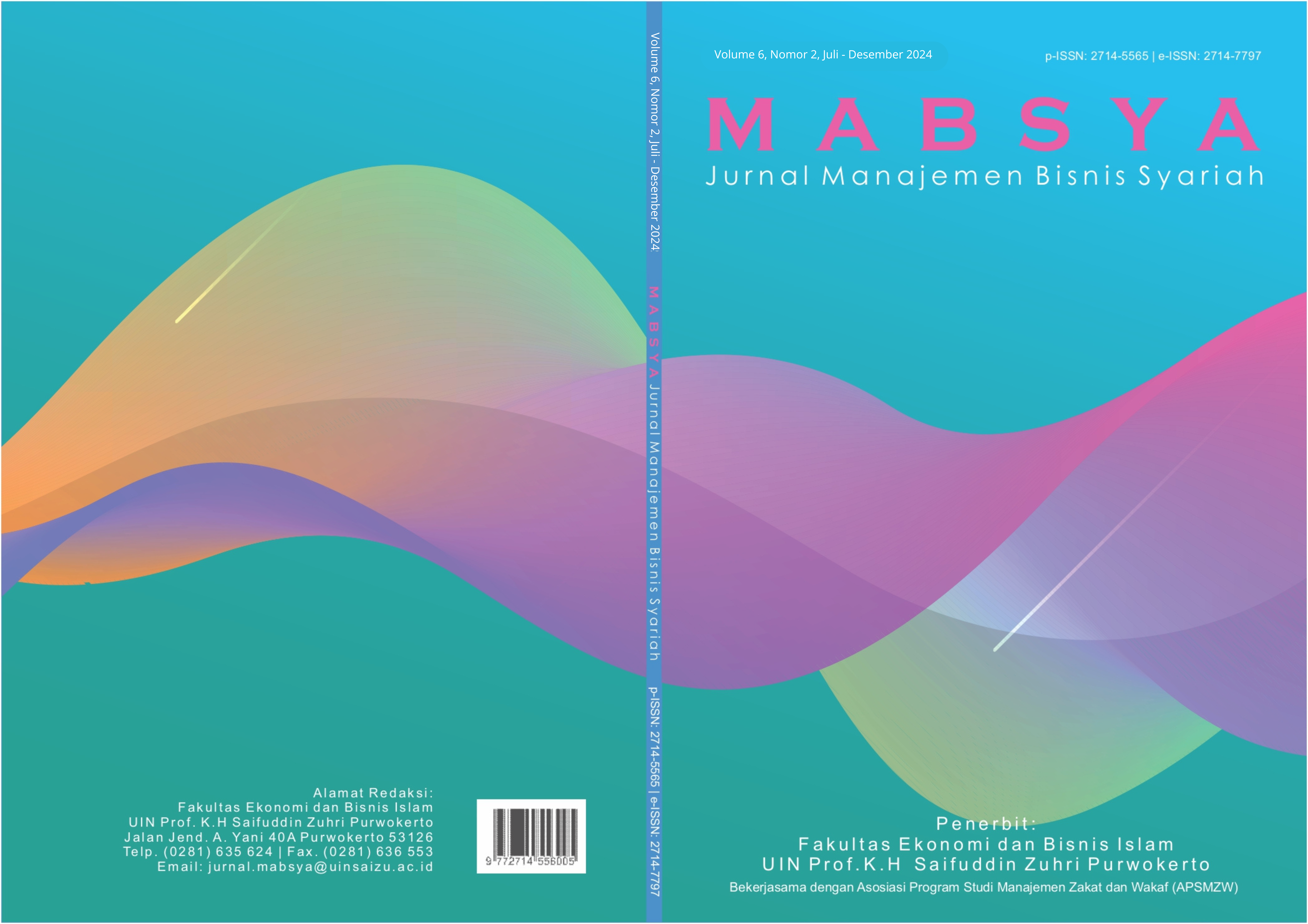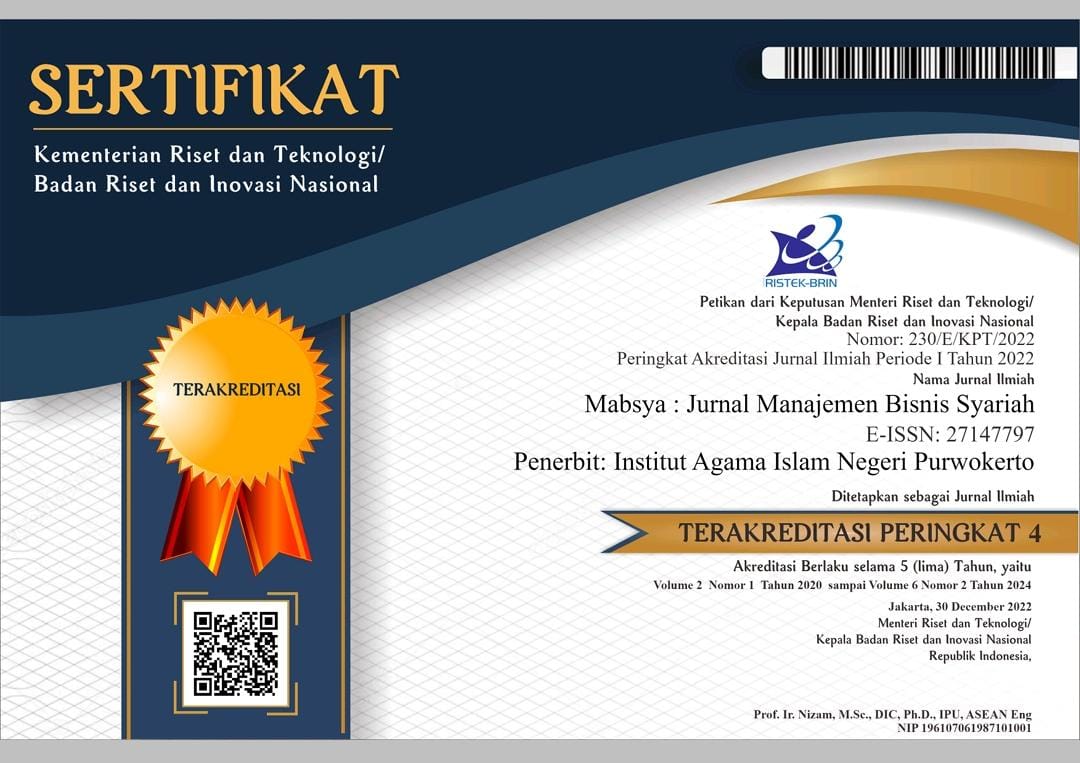Analysing The Application Of Syariah Principles In Malaysia’s Indirect Taxation System
DOI:
https://doi.org/10.24090/mabsya.v6i2.12248Keywords:
Indirect Taxation System, Shariah Compliance, Islamic Economics, Content Analysis, societal well-beingAbstract
The introduction of Malaysia's Goods and Services Tax (GST) spurred a critical examination of its Syariah compatibility. The Malaysian Fatwa Committee endorsed taxation, emphasizing adherence to Syara’ parameters, prompting further exploration, especially concerning indirect taxation systems aligned with Islamic jurisprudence. This paper is focuses on critically analyzing how Syariah principles are currently applied in the formulation and implementation of Malaysia’s indirect tax policies and comprehensively explore the principles of indirect taxation from Syariah perspectives. This study delves into the rich heritage of Islamic economic thought. Renowned scholars such as Abu Yusuf, Al-Qardawi, and Chapra have laid down foundational principles that continue to guide contemporary fiscal policies in Islamic contexts. Employing qualitative methodology, the study conducts content analysis of secondary sources and interviews with key officials from the Malaysian National Fatwa Committee (NFC), Department of Islamic Development Malaysia (JAKIM), Ministry of Finance (MOF) and the Royal Malaysian Customs Department (CUSTOMS). The findings reveal that Islamic scholars have delineated six principles, namely: quality of tax administrations; just, honest, and lenient treatment to taxpayers; fair distribution of income; defining of tax base and rates; flexibility in tax imposition; and approach to tax equity. While the first three principals have been implemented and adhered to, the latter three have been consolidated into the second principle. By bridging historical Islamic perspectives with contemporary policy needs, this study provides guidance for crafting Shariah-compliant especially in indirect tax policies, crucial for good governance and societal well-being. It contributes to Islamic economics discourse and addresses the need for studies evaluating Malaysia's indirect taxation practices' Shariah compliance.References
Abd Ghani, A., & Othman, Z. (2016). Kerangka Kerja Çonceptual Pelaporan Kewangan Islam bagi Wakaf, Zakat dan Baitulmal di Malaysia. Seminar Penyelidikan Perakaunan dan Pelaporan Kewangan Islam bagi Institusi Wakaf, Zakat dan Baitulmal di Malaysia (p. 23). Putrajaya: Jabatan Akauntan Negara Malaysia.
Abdul Rahim, R. A., Ismail, P., & Mohd Dahlal, N. H. (2009). Ijtihad dalam Institusi Fatwa di Malaysia: Suatu Analisis. Jurnal Syariah, 215.
Al Azraq, & Ahmad, H. (1980). Majallah al-Jamiah al-Islamiah bi al-Madinah al-Munawwarah. Nizam al-Doro'ib fi al-Islam, 271-280.
Azmi, S. (1995). Abu Yusuf's Contribution to The Theory of Public Finance. India: Aligarh Muslim University.
Baunsgaard, T., & Keen, M. (2005). Tax Revenue and (or?) Trade Liberalization. IMF Working Paper, 05/112.
BBC, M. M. (2012). Syrian opposition army imposes Islamic tax on Christians in Homs. Homs: BBC Worldwide Limited.
Elgaroshi, T. S., & Musa, A. S. (2013). Control of Income Tax Evasion in Islamic (Syariah) and Malaysian Law. Australian Journal of Basic and Applied Science, 770-780.
Emran, S., & Stiglitz, J. (2005). On Selective Indirect Tax Reform. Journal of Public Economics, 599-623.
Gemmell, N., & Morrissey, O. (2003). Tax Structure and the Incidence. Centre for Research in Economic Development and International Trade, 03-18.
Jabatan Kemajuan Islam Malaysia, J. (2015). Indeks Syariah Malaysia Model Tadbir Urus Berteraskan Maqasid Syariah. Kuala Lumpur: Jabatan Kemajuan Islam Malaysia.
Johari, F., & Ibrahim, P. (2010). The Dynamism in the implementation of Al-Kharaj during the Islamic rule. Shariah Journal, 629-658.
Kamali, M. (2008). Maqasid al-Shariah Made Simple. London and Washington: The International Institute of Islamic Thought.
Malaysia, J. K. (n.d.). Indeks Syariah Malaysia Model.
Mauluddin, I. (2015, March 30). Cukai dalam Islam: Kajian Perbandingan Menurut Yusuf Al-Qardhawi dan M. Umer Chapra. Retrieved from The Way to Success: http://ikhwanmauluddin.blogspot.my/2015/03/
Mohammad, M. O., & Shahwan, S. (2013). The Objective of Islamic Economic and Islamic Banking in light of Maqasid Al-Shariah: Critical Review. Middle East Journal of Scientific Research. 13, 75-84.
Muslimaid.org. (2015). The Complete Zakat Guide. London, England.
Oxford Dictionary of Economics, 3. (2009, September 19). Oxford Dictionaries. doi:10.1093/acref/9780199237043.001.0001
Razak, Y. D. (2016). Prime Minister's Speech in Conjunction With Launching of Malaysian Index Syariah Implementation Plan 2016-2018. Department of Islamic Development Malaysia (pp. 1-21). Putrajaya: Prime Minister Office.
Rosman, A. S., Mohd Yusof, F., Abu, F., & Syed Abdullah, S. N. (2015). Cukai Barang dan Perkhidmatan (GST) Berdasarkan Perspektif Fiqh Kontemporari. Bengkel Penyediaan Soal Jawab GST Menurut Perspektif Islam (pp. 1-39). Felda Residence, Kuala Terengganu: Jawatankuasa Fatwa Majlis Kebangsaan.
Shaban, M. A. (1976). Islamic History: A New Interpretation. Cambridge: Cambridge University Press.
Shinkafi, A. A., & Ali, N. A. (2017). Contemporary Islamic Economic Studies on Maqasid Shari'ah: a systematic literature review. Humanomics, Vol. 33, 315-334.
Syaltut, M. (2004). Al-Fatawa. Prt. 18. Beirut: Dar Al-Syuruq.
Yonah, R. A., & Margalioth, Y. (2006). Taxation in Developing Countries: Some Recent Support and Challenges to The Conventional View. 1st OECD International Conference (pp. 1-32). Michigan: University of Michigan Law School.
Yusof, Z. (1994). Percukaian Negara Islam: Perbandingan Percukaian Moden dengan Islam. Kuala Lumpur. Dewan Bahasa dan Pustaka.
Zaman, A. (2008). Islamic Economics: A Survey of the Literature. Munich Personal RePEc Archive, 11024.
Downloads
Published
How to Cite
Issue
Section
License
Copyright (c) 2025 Mohammad Radzi Mohammad Sharif, Selamah Maamor, Abu Sufian Abu Bakar

This work is licensed under a Creative Commons Attribution 4.0 International License.
Authors who publish with this journal agree to the following terms: Authors retain copyright and grant the journal right of first publication with the work simultaneously licensed under a Creative Commons Attribution 4.0 International License that allows others to share the work with an acknowledgment of the work's authorship and initial publication in this journal.














